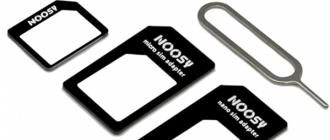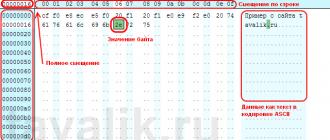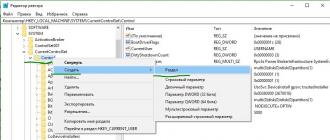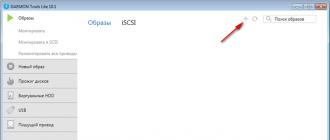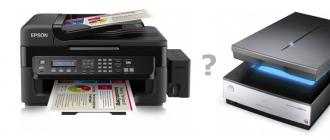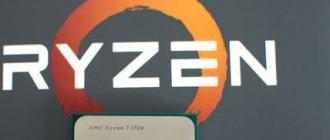How to open the Run window in Windows. Where to run in start Where to find the line to run on Windows 7
If you want to reduce the time it takes to complete routine processes and simply learn more about the useful Run command in different versions of Windows, then you have come to the right place.
The “Run” function simplifies the user’s work in any version of the OS
What are the advantages of this tool? How to run it on Windows 7, Windows 8 and Windows 10? What commands are there for the Run dialog? You will find this and much more here.
- Saving effort and time. This dialog is considered a multifunctional tool for significantly speeding up work. Just imagine how much effort it takes to launch the Device Manager window. First, we will open “Start”, go to “Control Panel”, find “System” in the extensive list and then select “Device Manager”. If you don’t know this algorithm at all, it will take a good ten minutes just to find this window.
- Hard to reach commands. There are commands that cannot be detected even with the help of Windows Assistant. This is where the urgent need for the “Run” function appears.
- Fine-tuning the system. It should be noted that this tool provides the user with the opportunity for more detailed and specialized configuration of the system, which is impossible to implement without the “Run” dialog.
- Say goodbye to Start. Finally, you will no longer need to wander through the vastness of the Start menu. All you need is to enter the word into the tool window using the keys.

Run command in Windows 7
Owners of the Windows 7 system, when opening “Start”, will not find the searched word, since the developers decided to extract the utility from there as unnecessary. In order to launch the Run command in Windows 7, there is a simple set of hot keys “Win (checkbox) + R”. If you want to pin this tool to Start, you should do the following:
- Right-click on “Start”;
- Open the “Properties” item;
- Find the “Start Menu”, select this tab and click “Customize”;
- We look for the line “Command Execute” and check the box, confirm the decision.
Now our long-awaited dialogue will appear in Start on the right side.
Run command in Windows 8
For owners of Windows 8 and Windows 8.1, the Start menu causes a strong emotional outburst, since now the specified toolkit is a long window with all the tiles, shortcuts and programs. There is no need to look for the “Run” command among this chaos - it is not there. In order to call up the desired dialog, the familiar set of hot keys “Win + R” or right-clicking on the “Start” icon is suitable.

Run command in Windows 10
There are three simple ways to open the treasured dialog in Windows 10:
- Press the already favorite hot keys “Win + R” - yes, this method is also relevant for 10.
- Right-click on the updated Start icon in Windows 10 and a list of laptop settings will open. In it we find our goal - ready.
- On the left side of the Windows 10 taskbar there is a “Search” item. If you enter the word “Run” into it, then the desired object will be at the very top of the list. By clicking on the command icon, we can launch it.

List of basic commands for Windows
The set of commands for launching a particular application is extensive. Some of the dialogues presented below are very dangerous for beginners, as they can lead to problems with the hardware and system. If you want to use a certain command, remember that all responsibility lies solely with you.
Opening an application using the Run dialog is very simple. By typing the desired word and pressing the “Enter” key, you will launch the necessary program both in Windows 7 and in its 8 version, and in 10.
Finally, let's move directly to the list of dialogues:
- msconfig - “System configuration”, which allows you to adjust startup and system diagnostics.
- taskmgr - “Task Manager”, displaying ongoing processes, open applications and PC load.
- regedit - “Registry Editor” opens the system registry and possible actions.
- devmgmt.msc - “Device Manager” helps solve problems with drivers and laptop components.
- sysdm.cpl - “System Properties” configures the computer name, performance, remote control, system recovery, and more.
- cmd - “Command line” will be useful for experts.
- control - “Folder Options” was created to change the settings of the folder tree in Explorer; system files are hidden here.
- secpol.msc - “Local security policy” allows you to customize the OS in detail.
- shutdown - “Shutdown.”
- Logoff - “Log out of the system.”
- desk.cpl - “Screen properties”.
- control keyboard - “Keyboard properties”, mouse - “mice”, printers - “printers”.
- appwiz.cpl - “Add or Remove Programs” allows you to manage applications.
- cleanmgr - “Disk Cleanup” analyzes the disk and offers to remove garbage.

In addition, there are commands to launch specific programs, for example, firewall.cpl will open the Firewall, mspaint will launch Paint, iexplore will load the browser, notepad will launch Notepad, calc will launch the calculator, and osk is an on-screen keyboard used in place of regular keys.
In conclusion, I would like to say that with a thorough knowledge of all queries, the “Run” command becomes the basis for working on a computer, since a number of its advantages are of great importance for the modern user.
Good day everyone... How to launch programs from the Run menu in Windows 7? First, let’s figure out how to get into this very “EXECUTE” menu.It turns out that you can do a lot of different things using this menu.Well, suppose we open the program. Not just open, but with ADMINISTRATOR rights. Or open the window we need. You can also assign any task to the computer. Accordingly, with the rights of the same ADMINISTRATOR.
I think that any PC user knows the most common commands executed in the “RUN” window. This is cmd (Command Line) and of course regedit (Registry Editor). If you know exactly the command that needs to be entered into the “RUN” window, then you can easily open any system application.
How can I launch the RUN menu dialog box? It’s very simple “START” - “EXECUTE”. Or let's say Win+R. Also in Windows7 you can enter the name of the command in the search bar,and press Enter to execute it.Below I will give an example of a table where I will describe what commands can be entered and what programs can be entered from the “Run” menu in Windows 7. If this is your first time encountering this, then it’s probably better for you to just read this article first.
Launching programs from the Run menu in Windows 7
Started programs from the RUN menu in Windows7 - Command table
| Russian element name | English element name | Team | |
| Ftp protocol (command line) | Ftp-protocol (command prompt) | ftp | |
| Not translated | Iexpress Wizard | iexpress | |
| Internet Explorer | Internet Explorer | iexplore | |
| Paint | Paint | mspaint | |
| Wordpad | Wordpad | write | |
| ODBC Data Source Administrator | ODBC Data Source Administrator | odbcad32 | |
| Administration | Administrative Tools | control admintools | |
| Backup and recovery | Backup and Restore | sdclt | |
| Notebook | Notepad | notepad | |
| Windows Firewall | Windows Firewall | firewall.cpl | |
| Turn Windows features on or off | Turn Windows features on or off | OptionalFeatures.exe | |
| System Restore | System Restore | rstrui | |
| Logout | Log Out Of Windows | logoff | |
| Date and time | Date and Time | timedate.cpl | |
| Disk Defragmenter | Disk Defragmenter | dfrgui | |
| Authorization Manager | Authorization Manager | azman.msc | |
| Windows Task Manager | Windows Task Manager | taskmgr | |
| Driver Verification Manager | Driver Verifier Manager | verifier | |
| device Manager | Device Manager | devmgmt.msc | |
| device Manager | Device Manager | hdwwiz.cpl | |
| Additional hours | Additional Clocks | control timedate.cpl,1 | |
| Shut down Windows | Shut Down Windows | shutdown /s | |
| Notes | Sticky Note | StickyNot | |
| Windows account database protection | Securing the Windows Account Database | syskey | |
| Sound | Sound | mmsys.cpl | |
| Sounds (sound scheme) | Sounds (sound theme) | control mmsys.cpl,2 | |
| Sound recording | Sound Recorder | soundrecorder | |
| Gaming devices | Game Controllers | joy.cpl | |
| Initializing Security Hardware for TPM | Initialize the TMP security hardware | TpmInit | |
| Screen color calibration | Display Color Calibration | dccw | |
| Calculator | Calculator | calc | |
| Command line | Command Prompt | cmd | |
| Windows components | Windows Features | OptionalFeatures | |
| Management Console (MMC) | Microsoft Management Console | mmc | |
| system configuration | System Configuration | msconfig | |
| Local Security Policy | Local Security Policy | secpol.msc | |
| Local users and groups | Local Users and Groups | lusrmgr.msc | |
| Windows Image Download Wizard | Windows Picture Acquisition Wizard | wiaacmgr | |
| Create Share Wizard | Create A Shared Folder Wizard | shrpubw | |
| Device Driver Installation Wizard | Driver Package Installer | dpinst | |
| Hardware Installation Wizard | Add Hardware Wizard | hdwwiz | |
| Volume mixer | Sound Volume | sndvol | |
| Resource Monitor | Resource Monitor | resmon | |
| Configuring program access and defaults | Set Program Access and Computer Defaults | controlappwiz.cpl,3 | |
| Setting up Account Control | User Account Control Settings | UserAccountControlSettings | |
| Scissors | Snipping Tool | snippingtool | |
| Shared folders | Shared Folders | fsmgmt.msc | |
| Disk Cleanup | Disk Cleanup Utility | cleanmgr | |
| Control Panel | Control Panel | control | |
| Folder "Fonts" | Fonts Folder | fonts | |
| Downloads folder | "Downloads" Folder | Downloads | |
| Folders settings | Restart Windows | shutdown /r | |
| Transferring Printers | Printer Migration | PrintBrmUi | |
| Pen and touch devices | Pen and Touch | TabletPC.cpl | |
| Personalization | Personalization | control desktop | |
| Task Scheduler | Task Scheduler | control scheduled tasks | |
| Remote Desktop Connection | Remote Desktop Connection | mstsc | |
| Getting programs | Get Programs | controlappwiz.cpl,1 | |
| Disk check | Check Disk Utility | chkdsk | |
| Checking and restoring system files | System File Checker (Scan and Repair) | sfc /scannow | |
| File signature verification | File Signature Verification | sigverif | |
| Conductor | Windows Explorer | explorer | |
| Explorer: C:\ | Windows Explorer: C:\ | \ | |
| Explorer: C:\Users\Your_name | Windows Explorer: C:\Users\Your_name | . | |
| Explorer: C:\Users\ | Windows Explorer: C:\Users\ | ... | |
| DiskPart program | Disk Partition Manager | diskpart | |
| Programs and components | Programs and Features | appwiz.cpl | |
| Event Viewer | Event Viewer | eventvwr.msc | |
| Screen resolution | Screen Resolution | desk.cpl | |
| Personal sign editor | Private Character Editor | eudcedit | |
| Local Group Policy Editor | Local Group Policy Editor | gpedit.msc | |
| Registry Editor | Registry Editor | regedit | |
| Registry Editor | Registry Editor | regedt32 | |
| Fax cover page editor | Fax Cover Sheet Editor | fxscover | |
| Resulting Policy | Resultant Set of Policy | rsop.msc | |
| System Information | System Information | msinfo32 | |
| Properties of the system | System Properties | sysdm.cpl | |
| System Properties: Advanced | System Properties: Advanced | SystemPropertiesAdvanced | |
| System Properties: System Protection | System Properties: System Protection | SystemPropertiesProtection | |
| System Properties: Hardware | System Properties: Hardware | SystemPropertiesHardware | |
| System Properties: Remote Access | System Properties: Remote | SystemPropertiesRemote | |
| Properties: iSCSI Initiator | iSCSI Initiator Properties | iscsicpl | |
| Properties: Internet | Internet Properties | inetcpl.cpl | |
| Properties: Keyboard | Keyboard Properties | control keyboard | |
| Properties: Mouse | Mouse Properties | control mouse | |
| Properties: Mouse | Mouse Properties | main.cpl | |
| Properties: Mouse: Pointer Options | Mouse Properties: Pointer Options | control main.cpl,2 | |
| Properties: Mouse: Pointers (Scheme) | Mouse Properties: Pointers | control main.cpl,1 | |
| Certificates | Certificates | certmgr.msc | |
| Network connections | Network Connections | control network connections | |
| Network connections | Network Connections | ncpa.cpl | |
| System Monitor | Performance Monitor | perfmon | |
| Indexing Service | Indexing Service | ciadv.msc | |
| Services | Services | services.msc | |
| Component Services | Component Services | dcomcnfg | |
| Component Services | Component Services | comexp.msc | |
| Program compatibility | Program Compatibility | msdt.exe -id PCWDiagnostic | |
| Create a system repair disk | Create a system repair disk | recdisc | |
| Nearby users | People Near Me | collab.cpl | |
| Saving usernames and passwords | Stored User Names and Passwords | credwiz | |
| DirectX Diagnostic Tool | Direct X Troubleshooter | dxdiag | |
| Help Desk Diagnostic Tool | Microsoft Support Diagnostic Tool | msdt | |
| Digitizer Calibration Tool | Ditilizer Calibration Tool | tabcal | |
| ClearType Text Adjuster | ClearType Text Tuner | cttune | |
| XPS Viewer | XPS Viewer | xpsrchvw | |
| Problem Reproduction Recorder | Problem Steps Recorder | psr | |
| symbol table | Character Map | charmap | |
| Phone and modem | Phone and Modem | telephon.cpl | |
| Windows Remote Assistance | Windows Remote Assistance | msra | |
| Disk management | Disk Management | diskmgmt.msc | |
| Computer management | Computer Management | compmgmt.msc | |
| Print management | Print Management | printmanagement.msc | |
| Color management | Color Management | colorcpl | |
| Installing or removing interface languages | Install or uninstall display languages | lpksetup | |
| Devices and Printers | Devices and Printers | control printers | |
| user accounts | User Accounts | Netplwiz | |
| Window color and appearance | Window Color and Appearance | control color | |
| Windows Mobility Center | Windows Mobility Center | mblctr | |
| Support Center | Action Center | wscui.cpl | |
| Sync Center | Sync Center | mobsync | |
| Accessibility Center | Ease of Access Center | utilman | |
| Encrypting File System (EFS) | Encryption File System | rekeywiz | |
| Fonts (adding or removing) | Fonts | control fonts | |
| Screen (text size) | Display (size of text) | dpiscaling | |
| Screen keyboard | On-Screen Keyboard | osk | |
| Magnifier | Magnifier | magnify | |
| Narrator | Microsoft Narrator | reporter | |
| Power supply | Power Options | powercfg.cpl | |
| Power Options: Advanced Options | Power Options: Advanced Settings | control powercfg.cpl,1 | |
| WMI control | Windows Management Infrastructure | wmimgmt.msc | |
| language and regional standards | Region and Language | intl.cpl | |
| Region and Language: Optional | Region and Language: Administrative | controlintl.cpl,3 | |
| Region and Language: Languages and Keyboards | Region and Language: Keyboards and Languages | control intl.cpl,2 |
Conclusion
If any of the elements in the list does not start for you. Most likely this means that it is not installed. Many of the Windows components can be installed from the Start menu - Control Panel - Programsand Components" - "Turn Windows components on or off." Unless, of course, you have Windows7 installed, and not an assembly.
We are often faced with the need to explain to the reader simple, but at the same time important things, such as, for example, running a file or some program on behalf of the System Administrator.
A series of similar articles will be primarily aimed at non-professionals and users who are just beginning their ascent to computer heights. However, who knows, maybe even an experienced guru will find something interesting for himself?
How to open Run in Windows
The small one-line dialog box is one of the most useful tools for Microsoft product users. Having proven itself in Windows 7, this function also found approval among fans of Windows 10 and 8, allowing you to execute various commands in just two clicks.
There are several ways to launch a window:
- find the start button in the Start menu;
- call using a keyboard shortcut;
- open via Task Manager.
Via the Start menu
You can again open the “Run” tab in this way in different ways. Firstly, there is a button in the Start menu, just clicking on it will bring up the desired window.
However, this method is more relevant for Windows 7, while in the tiled interface of Windows 8 or 10 this button may not be present.
Secondly, you can use the system's built-in search: just start typing the word you are looking for (“run”) in the search field (in the case of Windows 7) or directly in the tiled menu (Windows 8, 10).

Via keyboard shortcut
Pressing the Windows and R keys simultaneously on your laptop or computer keyboard will open the Run window.


You can also use a special menu called the Power User Menu to access the Run panel. You can open it by pressing the Windows and X keys simultaneously.
Power User Menu allows you to access not only the “Run” line, but also a number of other places in the system, including “Control Panel”, “Task Manager” and others.


Via "Task Manager"
Open the “Windows Task Manager” in any way you know, in the upper left corner find the “File” tab, immediately after that in the drop-down menu click on “Run a new task” (or “New task (Run ...)” if you are using Windows 7 ). This combination allows you to open the Run window, but requires more effort and time than previous methods.

Conclusion
Now, after reading our article, the methods for launching the Run window are familiar to you. Perhaps the most preferable option is using the keyboard shortcut (Win + R), however, we believe that everyone is free to choose the method that they like.
Run command in Windows 7, 8 used to quickly launch system utilities, programs, files and folders. An alternative to the Run command is the Start menu search, but it does not save a list of the most recently entered commands. To open the Run window in Windows 7, 8, you can use the following methods:
2. Get to the App Paths section (see the screenshot below for the full path).
3. Right-click App Paths. In the menu, point to "create" and then select "section".

4. Give the partition a name, for example torrent.exe (write the name with .exe) and click Enter.
5. Select the created parameter, then double-click on “default” on the right side. In the “value” field, enter the full path to your file (.exe) and click OK.

6. In the empty space area, right-click, point to "new" and click "string parameter". Name it Path. Double-click on Path with the left button and in the “value” area enter the path to the folder where the exe file is located, then click OK.

Close Registry Editor. Run "Run" and enter the name of the application to quickly open.
You now know what is the run command in Windows 7, 8, how to enable and disable it, and you also have an extended list of standard commands, and you can easily create a list of custom ones. I hope the article was useful and answered your questions.
Most of the day-to-day operations we do in Windows are done using the mouse. And this is not surprising, because the mouse is the main graphical user interface (GUI) tool. However, Windows has hiding places that, unfortunately, cannot be reached in this way. To do this, you will need to give the system direct instructions in the form of commands. That is, act as they did before the advent of the GUI, in, for example, operating systems such as MS-DOS or UNIX.
Even today, the command line is an essential tool for Linux, including GUI-based distributions like Ubuntu. And sometimes it happens that performing some actions using a command is simply simpler. So buttons, lists and menus are far from the only way to manage programs and data. The Run window in Windows 7 is intended for exactly the purposes we have outlined. How to execute an order given by a regular text message in Windows 7?
 The Run window is intended for this task. An alternative to this window is the command line (console) interface. The Run dialog form is accessible from the Start menu of the operating system. Read more below.
The Run window is intended for this task. An alternative to this window is the command line (console) interface. The Run dialog form is accessible from the Start menu of the operating system. Read more below.
How do I access the Run interface?
Sometimes the Run menu option does not appear in the Start menu. In order to enable its display, you need to right-click on the “Start” icon, call up the context menu and select “Properties” from it. With its help you can open the form "Taskbar and Start Menu Properties". Next, go to the “Start Menu” tab and click on the “Customize” button. As a result, we get a list something like this:
 In which you need to check the box to the left of the option "Run command". Now the right team will always be in the most visible place.
In which you need to check the box to the left of the option "Run command". Now the right team will always be in the most visible place.
Experienced users are well aware of one interesting and not very obvious feature. It turns out that the dialog interface for entering commands is very easily replaced by a standard search field "Find programs and files". Enter any instruction into this field and get exactly the same result.
 We proposed to control the system without a mouse, and to access the considered interface we use the mouse. In addition, we need to know where the link is that we need to click on with this mouse. This is not a very logical approach if we are trying to replace working with a mouse with keyboard techniques. Is there a way to get what you want without using the mouse? Yes, there is such a method, and it would be worth talking about it at the very beginning, but we decided to consider all the possibilities. To achieve the same effect, just use the keyboard shortcut + “R”.
We proposed to control the system without a mouse, and to access the considered interface we use the mouse. In addition, we need to know where the link is that we need to click on with this mouse. This is not a very logical approach if we are trying to replace working with a mouse with keyboard techniques. Is there a way to get what you want without using the mouse? Yes, there is such a method, and it would be worth talking about it at the very beginning, but we decided to consider all the possibilities. To achieve the same effect, just use the keyboard shortcut + “R”.
